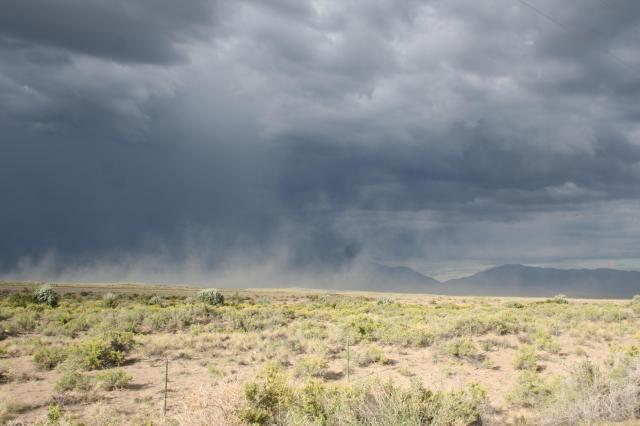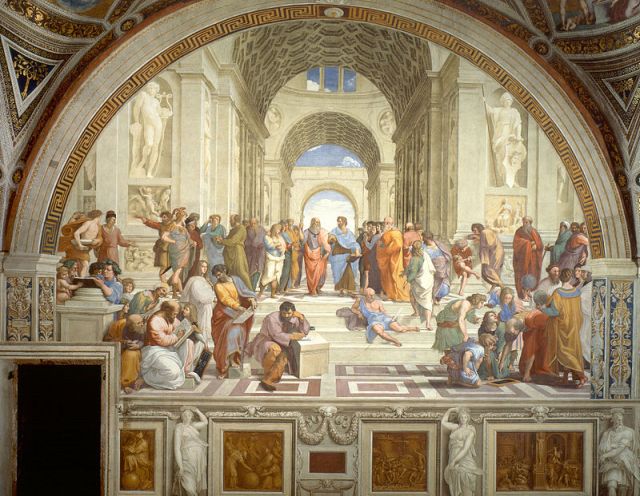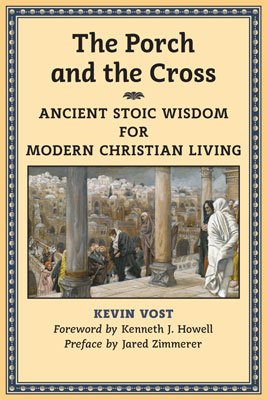
By Kevin Vost, Psy.D.
Like flourishing leaves on a spreading tree,
which sheds some and puts forth others,
so are the generations of flesh and blood;
one dies and another is born.
Sirach 14:18
As is the race of leaves, so is the race of men.
Some leaves the wind scatters upon the ground,
and others the budding wood produces,
for they come up again in the season of spring.
So is the race of men,
one springs up and another one dies.
Homer, Iliad, Book VI, 145-149
Leaves also are your children…
A little time and your eyes will close;
and he who attends you to your grave another will soon lament.
Marcus Aurelius, Meditations, Book X, 34.
On this early September morning, well before dawn, there’s a slight bracing chill in the air. The summer choirs of crickets and cicada are silent right now, as the violin-sounds from my computer’s speakers proclaim the arrival of my favorite season through the strains of Vivaldi’s Autumn.[1] As much as I enjoy the warmth and activities of summer, the fall has always signaled for me the best time of the year for mind and body as my thoughts return again to formal studies and also to heavy weightlifting. But why is fall “the season to be Stoic?” I will offer three main reasons in the three sections below.
From Summer’s Hot Violent Passions to Fall’s Cool Stoic Reflections
Social scientists have been aware for decades of the increased rates of violent crimes in the United States during summer time, often with the hottest of summers yielding the highest rates of violence. This year has unfortunately been no exception. Headlines for the city of Chicago within my own state proclaimed the 500-murder mark had been reached by Labor Day this year, and yet other cities, such as St. Louis, New Orleans, Detroit, Baltimore, and Newark tend to have even higher murder rates per capita. Explanations for the increase in violent crimes in summer have included the fact that people are out more in the summer time and more likely to interact, including in violent ways. It also appears though that the discomfort that comes from the heat itself may tend to increase irritability and make people more hair-triggered in their anger, with potentially deadly results if that hair-triggered finger rests on an actual trigger or some other deadly weapon.
So where do the Stoics come in? The great ancient Roman Stoics moralists of the first and second centuries A.D. (e.g., Musonius Rufus, Epictetus, Seneca, & Marcus Aurelius) were best known for the way that they taught that we can become masters of our emotions, including anger. Indeed, even in our day, a person who bears calmly with adversity or insult is said to be stoic with a small “s”, because of those capital “S” Stoics of old.
Seneca once wrote: “but anger may be routed by precepts; for it is a weakness of the mind that is subject to the will.”[2] The fall then is a time to slow down and to cool down, to reflect on life, on our own behaviors, and on our responsibilities to control and improve the ways that we think, and act, and feel. Regarding how we can train ourselves to control our own anger and irritability, I offer as an example, this simple bit of sage advice from Roman Emperor Marcus Aurelius.
In Book II of the Meditations[3], Aurelius begins with a paragraph of advice that we might all do well to read first thing every day, right after morning prayers! The kindly emperor tells us that upon arising each day we should say to ourselves that we are going to encounter “the busybody, the thankless, the overbearing, the treacherous, the envious, the unneighborly”;[4] and though more than two-thirds of a million days have passed since he wrote those words, I think they still ring true for us today (and tomorrow). He goes on to say that we should remind ourselves that such people act this way because they do not truly understand the beauty of goodness and the ugliness of evil; that we cannot truly be debased or injured by them if we do understand the good; that they share with us the same humanity and capacity for reason; and that we cannot hate them, but must value them as kinsmen, placed in the world for cooperation, and not for resentment and aversion. Whew!
In other words, he tells us that we can remain calm in our minds and loving in our hearts if we forgive one another our faults—in advance! If I may call to mind Dr. Ellis’s ABC scheme from chapter 6,[5] inspired by the Stoics after all, the emperor would have us plant rational beliefs in our mind ahead of time, ready to spring forth to counter life’s little unfortunate events that are simply bound to happen. (And what better day to start this practice than this one?)
We and Ours are as Leaves
There is another simple reason the fall might prompt us toward Stoic (and Scriptural) reflection. For the first time this year, after I swooped around the front lawn mowing in a “crop circle” pattern last week, I noted at the yard’s perimeter some semi-circular swirls of brown and crispy flat objects. We read in the Old Testament book of Sirach how human generations are like the leaves of trees that sprout forth for a time and then are shed to make room for a new batch to flourish. The wise Greek poet Homer had made a similar observation, and the sage emperor Aurelius had taken the idea and run with it in several different parts of his Meditations.
So many generations of leaves and of men have sprouted and been shed in the more than 1800 years since Aurelius himself left the earth, and yet in his own time, the emperor reflected on those who had passed before him, calling to mind the times of his predecessor the emperor Vespasian (68-79 A.D.), poignantly noting how we “will see all the same things, people marrying, bringing up children, sick, dying, fighting, feasting, trafficking, farming, flattering, pushing, plotting, wishing for someone to die, grumbling about the present, loving, heaping up treasure, coveting the consulship and kingly power. Well, the life of those people is all over.” He notes next the time of Trajan’s rule (98-117 A.D.), stating: “Again, all is the same.” Aurelius reminds himself that the same applies to himself and his time, and to you and me, and indeed to our sons and daughters and to their children as well. Indeed, consider that today in 2016 we have documented proof right now of merely one living person born before the year 1900, and when she passes away, every single leave from humanity’s tree of the 19th century will have been shed.
The point of such reflections is to remind ourselves not to be carried away with the trivial, swept up in anger over things that do not matter much, or waste our time pursuing fleeting pleasures, earthly treasures, or hollow acclaim. Instead, we should use our brief time allotted on earth to pursue virtue and follow the will of God in the matters that matter the most.
The fall then is certainly a fitting time of year to think of the fleetingness of our life on earth, as did the most thoughtful Stoics, employing their God-given reason. Yet we as Christians are aided by God’s revelation too and by our faith in God Incarnate in Christ. This leads to one last reason to consider this “the season to be Stoic.”
Preparing to Deck the Halls
Marcus Aurelius and some other great ancient Stoics reasoned their way to a powerful, loving God and believed that the soul was in some way immortal, but they did not know Christ or understand the extent to which our fleeting lives on earth prepares us for an eternal life, hopefully in heaven. They did not fully realize that while the leaves must fall and die in the limited physical space of the earth, the tree of eternal life has room for all who would seek it and persevere in their faith in the God-man who chose to hang from a tree for us.[6] The stoic reflections of the Stoics on the season of fall can still perhaps prepare us for the advent of Advent and of Christmas time soon before us. Then it will be not merely the season to be Stoic, but the season to be jolly, and as the song goes, to deck the halls with boughs of holly — in the most joyful way.
[1] Antonio Vivaldi (1678-1741), Great Baroque composer, violinist – and ordained Catholic priest, perhaps most famous for his musical piece The Four Seasons. (I invite you to pull up his Autumn and listen along as you read!)
[2] Seneca, Moral Essays, vol. 1, trans. John W. Basore (Cambridge, MA: Harvard University Press), On Anger, bk. 2, chap. 1, 169.
[3] Those notes to self he prepared in his late 50s in the evenings along the frozen banks of the Danube as he led troops at the border of the Roman Empire.
[4] Marcus Aurelius, Meditations, trans. C. R. Haines, (Cambridge, MA: Harvard University Press, 2003), 27.
[5] This section is excerpted from my The Porch and the Cross: Ancient Stoic Wisdom for Modern Christian Living (Kettering, OH: Angelico Press, 2016), 160-161.
[6] Cf. Rev. 2:7.
Copyright 2016 Kevin Vost
Image by hotblack (2011) via Morguefile
Kevin Vost holds a Doctor of Psychology in Clinical Psychology (Psy.D.) from Adler University in Chicago. He has taught psychology and gerontology at Aquinas College in Nashville, the University of Illinois at Springfield, MacMurray College, and Lincoln Land Community College. He has served as a research review committee member for American Mensa, an organization promoting the scientific study of human intelligence, and as an advisory board member for the International Association of Resistance Trainers, an organization that certifies personal fitness trainees. Dr. Vost can be reached through his website: www.drvost.com.
 Sign up to receive Angelico Press email by midnight tonight for a chance to win A Companion to Saint Thérèse of Lisieux: Her Life and Work & The People and Places In Her Story by Joseph P. Kochiss.
Sign up to receive Angelico Press email by midnight tonight for a chance to win A Companion to Saint Thérèse of Lisieux: Her Life and Work & The People and Places In Her Story by Joseph P. Kochiss.






 By Kevin Vost
By Kevin Vost God’s existence and to strive to guide them in lives of virtue in accordance with His will as expressed in natural law. I knew that medieval abbots had adapted Epictetus’s Handbook to use guides for monks, and that St. Thomas Aquinas had mined the writings of Seneca in his analysis and synthesis on human virtue within the Summa Theologica. As a psychologist, I was well aware that the founders of modern cognitive psychotherapies had openly expressed their debt to the wisdom of the Stoics in teaching us how to use our powers of reason to rein in harmful emotions and distress. What I did not know until the contract was signed and my research began was that among the Greek and Roman Stoics were outspoken ancient champions of what Pope St. John Paul II would deem in our time a “culture of life.”
God’s existence and to strive to guide them in lives of virtue in accordance with His will as expressed in natural law. I knew that medieval abbots had adapted Epictetus’s Handbook to use guides for monks, and that St. Thomas Aquinas had mined the writings of Seneca in his analysis and synthesis on human virtue within the Summa Theologica. As a psychologist, I was well aware that the founders of modern cognitive psychotherapies had openly expressed their debt to the wisdom of the Stoics in teaching us how to use our powers of reason to rein in harmful emotions and distress. What I did not know until the contract was signed and my research began was that among the Greek and Roman Stoics were outspoken ancient champions of what Pope St. John Paul II would deem in our time a “culture of life.” Quite a few animals have a built-in compass. We don’t exactly know how it works, but it does work. It lets monarch butterflies migrate south in the winter and then back again; it lets honey bees find their nest back; and it lets homing pigeons return to their home. But human beings do not have such a compass, so they can go easily off track. Humans need special artificial tools to help them go in the right direction—tools such as a magnetic compass or a GPS device. But on moral terrain, such tools will not help much to find the way. That’s why we can easily get lost in moral dilemmas, unless we have also some kind of moral compass.
Quite a few animals have a built-in compass. We don’t exactly know how it works, but it does work. It lets monarch butterflies migrate south in the winter and then back again; it lets honey bees find their nest back; and it lets homing pigeons return to their home. But human beings do not have such a compass, so they can go easily off track. Humans need special artificial tools to help them go in the right direction—tools such as a magnetic compass or a GPS device. But on moral terrain, such tools will not help much to find the way. That’s why we can easily get lost in moral dilemmas, unless we have also some kind of moral compass. This is one of the reasons why I wrote my latest book,
This is one of the reasons why I wrote my latest book,  The Dominican School of Philosophy and Theology, part of the Graduate Theological Union at Berkeley University in California, is offering a new Certificate in Theological Studies for working artists which features David Clayton’s
The Dominican School of Philosophy and Theology, part of the Graduate Theological Union at Berkeley University in California, is offering a new Certificate in Theological Studies for working artists which features David Clayton’s 
